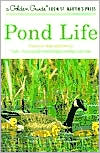Sable Island: The Strange Origins and Curious History of a Dune Adrift in the Atlantic
Marq de Villiers and Sheila Hirtle are coauthors of Sahara: The Extraordinary History of the World's Largest Desert and several other books on exploration, history, politics, and travel. Sable Island, published in Canada as A Dune Shift, won the twenty-eighth Evelyn Richardson Nonfiction Prize, the longest-running writing award in Canada. De Villiers and Hirtle live in Eagle Head, Nova Scotia.\ Sable Island—one hundred mile due east of Nova Scotia, in the midst of the worst weather in...
Search in google:
Marq de Villiers and Sheila Hirtle are coauthors of Sahara: The Extraordinary History of the World's Largest Desert and several other books on exploration, history, politics, and travel. Sable Island, published in Canada as A Dune Shift, won the twenty-eighth Evelyn Richardson Nonfiction Prize, the longest-running writing award in Canada. De Villiers and Hirtle live in Eagle Head, Nova Scotia.Sable Island—one hundred mile due east of Nova Scotia, in the midst of the worst weather in the North Atlantic—is a thirty-mile-long sand dune, uninhabited except by a couple of government agents and by bands of wild horses that have populated the island for more than two hundred years. Yet this small place illuminates grand and global themes, both human and natural. For centuries, Sable terrorized legions of mariners crossing from Europe to America—more than five hundred ships have been wrecked on its shores, fully ten disasters for every mile of coastline. Sable is constantly moving, its beaches disappearing and reappearing in storms, its very body in slow motion to the east. Because of this, it is a metaphor for the way the planet governs itself, because to appreciate Sable is to understand the workings of the great ocean currents, the winds and the North Atlantic gale, and the forces of entropy."As delightful to experience in words as it is difficult to experience in actuality . . . inherently compelling."—Chicago Sun-Times"As delightful to experience in words as it is difficult to experience in actuality . . . inherently compelling."—Chicago Sun-Times "[A] sense of wonder . . . prevails from first page to last . . . A great book."—Portland Press Herald (Maine) "The longtime Canadian collaborators outline the natural and chronological history of a 30-mile crescent of peach-colored sand that still eats an occasional ship for supper. Dotted with greenery and wild horses, orchids and Ipswich sparrows, Sable Island is considered one of the great graveyards of the North Atlantic. It sits out there in the ocean's steel-gray roil on the edge of the continental shelf. Who would ever suspect that there would be a shape-shifting island in this vastness, with submerged bars ready to trap and topple a ship? Very few, at least at first, explain the authors in their glinting profile. The island's distant past is as foggy as its summer weather; Basque sailors may have been there, maybe Vikings, perhaps an Irish monk in a coracle. De Villiers and Hirtle provide a sweet little geological history of the place, a child of glacial retreat, and detail the island's special location 'in the center of this vortex, this complex system of currents, gyres, and rings' that give it stability but also may spell its doom by pushing it into the abyssal gully to the east. For such a small scrap of sand, the island has a dogged human history, borne of the rivalry between the French and English. A humane establishment was founded there to aid shipwrecked sailors (brought to life with excerpts from letters, diaries, and news reports) as well as to dump a lunatic or misfit or two. Access is guarded these days to protect the fragile estate and its inhabitants—seals that serve as fodder for the elusive Greenland shark, birds, and feral ponies—but the island remains under threat from energy interests and from nature itself. Another finely etched portrait of a strange, romantic place from this accomplished duo."—Kirkus Reviews "Sable Island is a low-lying, 30-mile-long sand dune on the edge of the North American continental shelf southeast of Nova Scotia. It lies right in the middle of a complex set of ocean currents, meteorological systems, and historical events. It is also the subject of this well-written, easy-to-read 'biography' by de Villiers and Hirtle. Basque fishermen and Vikings were probably the first to see the island, which was later inhabited by feral horses that have survived there for almost 250 years. The authors also examine the politics of trying to preserve this fragile ecosystem . . . readers wanting to delve more deeply into the various aspects of Sable will make good use of the extensive bibliography."—Margaret Rioux, Library Journal "This engaging natural history celebrates one of the world's most precarious landscapes, a sand spit 30 miles long and less than a mile wide, plunked down 100 miles from the Canadian coast. Continually gouged by wind and wave and stingily replenished with sand by the currents swirling around it, the evanescent but intractable island has wrecked hundreds of ships over the centuries while sheltering enough greenery and fresh water to maintain a herd of wild horses. De Villiers and Hirtle explore the geological and oceanographic forces that shaped and maintain the island and the flora and fauna that cling to it. They also examine its place in human history, regaling readers with tales of the shipwreck tragedies that darken its past and recalling the many odd little communities of castaways, lifeguards and scientists that have washed up on its beaches. The island and its environs are now threatened by oil and gas drilling, rising sea levels and an ominous drift toward the continental shelf and the deep-sea abyss beyond. But while it lasts, a dynamic equilibrium fleetingly perched atop titanic forces of nature, the island is an apt metaphor for life itself."—Publishers Weekly
Sable Island \ The Strange Origins and Curious History of a Dune Adrift in the Atlantic\ \ By Marq De Villiers Walker & Company \ Copyright © 2006 Marq De Villiers\ All right reserved.\ ISBN: 9780802777409\ \ \ Chapter One \ Its Disputed Discovery\ Vikings and Basques appear, the first shipwreck is recorded, and "cattel & swyne" are deposited there\ When Europe was overrun by the Celtic and Hunnish barbarians, its inhabitants sank back into the cultural stupor now known as the Dark Ages and seemed to lose all interest in geography, as they did in the physical world itself, steeping themselves instead in religion, into which were stirred purgative doses of superstition and the mysteries of magic. The geographic knowledge of antiquity was fortunately transferred to the Islamic world, where it was preserved and embellished-the Arabs of the eighth to the twelfth centuries were great travelers and indefatigable mapmakers. As the Middle Ages waned, around the end of the twelfth century and at the beginning of the thirteenth, this repository of knowledge was gradually reintroduced to western Europe by translation from the Arabic treatises, and from the remaining Greek texts, into Latin. It was part of an intellectual revival that was to persist for centuries, and it renewed western Europeans' interest in geographic explorationand expanded their knowledge of the physical world. "Distant islands, which had remained hidden from view because of the terrors of the ocean, now began to be revealed. Chronicles of visits replaced recollections of occasional chance encounters. By 1350, almost all the Atlantic islands were known to the historians and geographers of western Europe, though their information was vague, often confused, and lacking in precise detail."\ Even now, however, the identity of whoever first saw Sable Island remains shrouded in a fog of doubt. It wasn't the indigenes of America, who never ventured that far from the coast. Most writers assume it was the Portuguese, who were commonly fishing in these waters in the fifteenth century. But it could have been the Basques. Or even the Vikings.\ There is no hard evidence that any of the Vikings encountered Sable Island. We know, of course, that they colonized Greenland and reached the coast of Labrador and the island of Newfoundland, from which it would have been a short hop to Sable. But no record exists that they went that one step farther. The Viking colonization of Greenland itself had been something of a confidence trick by an Icelandic renegade called Erik the Red and his son Leif the Lucky. Erik was, according to contemporary accounts, a volatile character with scant regard for convention or for law-the Norse equivalent of a Wild West outlaw. Erik and Leif had left Norway around 960 "because of some killings," a phrase suggesting that Erik had made it to his longboat just before the posse. As a refugee in Iceland, he seemed at first to prosper. He made a good marriage and settled down to farm in the gentle valleys of Haukadale, in the south of the island. But his bad temper got him into trouble again, and there was more violence. With yet another gang of aggrieved relatives sworn to vengeance on his heels, he set sail for a land far to the west that had never been settled, but which had been described a century earlier by a storm-swept sailor called Gunnbjorn Ulfsson. Ulfsson had painted vivid verbal pictures of mountains of ice, towering seas, and ghastly storms, none of which seem to have deterred Erik in the least. Sailing west on the sixty-fifth parallel, Erik finally caught sight of an 8,200-foot ice mountain (the Ingolsfjeld Glacier). He turned south, rounded what is now Cape Farewell, and explored the much less savage west coast. Liking it well enough, he returned to Iceland for one more skirmish with his enemies and to round up a few colonists, ambitious outsiders like himself. To persuade them to depart for parts unknown, he was careful to counteract the grim tales of Ulfsson, and prudently called the new country Greenland, giving it a nicely bucolic sound. A contemporary, under no illusions about Erik's character, left a record of his reason: "He said that people would be much more tempted to go there if he gave it an attractive name." In the summer of 985, the colonists had duly signed up, and a fleet of twenty-five ships set sail from Iceland to the newly named Greenland. Erik's con game notwithstanding, Greenland was clearly more temperate than it is now. There was sufficient grassland on the western coastal strip to permit the cultivation of grains and the raising of sheep, goats, cattle, and pigs. Modern excavations of the settlement show that it had been reasonably prosperous. Erik's own farm had four barns and room for forty head of cattle, and the remains of a stone cathedral one hundred feet long have been uncovered. The Icelanders, and therefore the Greenlanders, were resolute Christians. For the next few centuries the settlements were stable. That the Greenlanders explored the Arctic regions is known from the discovery of a stone cairn in Greenland, dating from the fourteenth century, at almost seventy-three degrees north latitude, bearing the runic description Erling Sighvatsson and Bjarni Thjordarson and Eindridi Jonsson built these cairns. That they also went west and south is not disputed, and the remnant of their camp at the northern tip of the island of Newfoundland, at L'Anse Aux Meadows, is now a Canadian national monument. They also found what they called Vinland, though the exact location of this land of flowing streams, majestic trees, and wild grapes is still a matter of acrimonious academic debate. It was unlikely-pace the grapes-to have been Newfoundland or Labrador, and still less Baffin Island, but it could have been Nova Scotia or even the New England states. In the fifteenth century, the outlying colonists either went home or perished. It was about this time that the climate of the region began rapidly and terrifyingly to deteriorate. For a while, ships still made their way west along the sixty-fifth parallel, but ever since the middle of the fourteenth century they had had to skirt the increasing pack ice and make a difficult circuitous route along more southerly latitudes. By 1400 the Inuit, who had migrated north in Greenland after the previous ice age, began to be forced south by the cold, and there were repeated clashes with the Norsemen. A decade into the fifteenth century, the Greenland colony was completely cut off from the rest of the civilized world. The last reference to Greenland was in the Iceland annals for 1410, when an Icelander returning home left a laconic account of his sojourn, a last elegy for a hardy and energetic people now defeated by nature. His was the last ship out; winter had abruptly shut down Greenland. Sometime during the Norse sojourn on Greenland, a sailor called Biom (or Bjiorm) Heriafson,\ after making the coast of Newfoundland and sailing towards the setting Sun, came upon a sandy land, which, from its position, must have been Sable Island. In his meager chart of a new world its sands have but scant mention; but it must have been that this hardy Dane from the undecked poop of his miserable shallop was the first European that sighted this terror of all future navigators."\ Possible. But this is pretty thin evidence.\ As for the Basques, there is no doubt that their journeyings in these waters go back before the Portuguese, though their tales of discoveries far to the west were at first dismissed in Europe as sailors' boasting. Even now, their claims are supported by anecdotal evidence only, just as the Viking claims were, before the remains of the Norse settlement of L'Anse Aux Meadows were found a few decades ago. Still, according to those who have made the Basques their field of study,\ the more widely believed and more carefully reasoned theory is that the Basques arrived in North America, along the Newfoundland or Labrador coast in the fourteenth or fifteenth century, that they visited, perhaps with some regularity, perhaps even had people working there, substantially before John Cabot's 1497 "discovery" of Newfoundland and Christopher Columbus's 1492 Caribbean find.\ Well before these dates, the early skepticism in Europe about Basque exploits diminished, and there were persistent rumors that Basque fishermen had found a land across the sea, perhaps only an island, perhaps more. Certain Bretons even attempted to follow Basque fishermen to find out where they were going and what they were doing there, but without success. In the early fifteenth century, a story was current among European mariners that two Basque ships from Guipzzcoa, one captained by Juan de Echayde and the other by Matais de Echeveste, had reached land across the Atlantic at the end of the previous century, but there is no proof. Recently the ruins of extensive Basque whaling stations have been found in Newfoundland and on the Labrador coast, but these date back only to about 1530, not the 1390s. Still, a mere three decades after that, the Basque population of North America may have been as high as two thousand.\ Mark Kurlansky author of The Basque History of the World, an engagingly Basque-positive polemic, has adduced two arguments for placing Basques in America before Columbus. The first is the sheer volume of their catch. Basque fishermen were landing enormous quantities of cod and whale products for a century or two before 1492, and their competitors were convinced that the already-discovered fishing grounds alone could not explain the number of fish they brought to European markets. Only the banks off Newfoundland and the Scotia Shelf could do that, although of course they were not known to the competition at that time.\ The second argument is the improbability, that the best sailors, with the best ships, the best navigators, and a tradition of sailing the longest distances could have missed North America during centuries in which they were clearly so close.\ There is evidence of the Basques in the Fdroe Islands as early as 875. This was a 1,500-mile journey which, if they did not make landfall along the way, was a remarkably long distance to sail at that time. Is it possible that in all the following six centuries, working in the narrow area of the North Atlantic where the continents are not far apart, having known and learned from the Vikings, that the Basques never ventured the relatively shorter distance to North America? In 1412 all Icelandic account records that twenty Basque whalers passed by the western tip of Iceland off Grunderfjord which is a 500-mile crossing to Greenland. From there another 1,200-mile voyage would have taken them to Newfoundland.... Most fishermen had little reason to cross the Atlantic, since the catches vanish with the end of the European continental shelf and do not pick up again until the other side. But the Basques chased whales that traveled to sub arctic waters and then dropped down along both coastlines.\ This is better evidence that the Basques had sailed in Sable waters than that adduced for the Vikings, perhaps. But is it persuasive? Basque threads can be found in many a Spanish and Portuguese seafaring tale, too. For example, Juan de la Cosa, a Spanish explorer usually known as Juan Vizcamno, or John the Basque, is famous in cartographic history for his maps. Vizcamno may have been with Columbus on his first voyage and was definitely on the 1493 second voyage. Afterward, he continued to explore the Caribbean basin, and in 1500 drew the first map or the world to include all the Americas. It contains a number of phantom islands, any one of which could be Sable. His 1506 world map, a somewhat embellished version of the first, with a more detailed Caribbean, was scarcely any more definitive about Sable. Which leaves us with no real evidence that the Portuguese weren't the first to discover Sable, although they are plausible candidates. Portuguese mariners were, after all, as intrepid as the Basques, if not as experienced. The Azores, for example, were discovered about 1427 by Diogo de Senill (or Sevilha), a pilot of the king of Portugal.\ Some writers have suggested, without providing evidence, that the island was first sighted by John Cabot in 1497.\ But Sable Island itself appears definitively for the first time on a map drawn by Pedro Reinel in 1502. Unfortunately, Reinel's map shows two possibilities. Most historians consider his San Jobo Island to bc Sable, though a few dissenters have nominated his Island of Santa Cruz as their candidate. Coincidentally Santa Cruz is what Sable was called, just a few years later.\ The early Portuguese and Basque mariners faced the open ocean and the prospect of exploiting the apparently endless lands beyond it with a shifting mix of hardheaded practicality and largeness of vision. Sometimes they just seemed to want victualing stations near the cod banks; at others their imaginations were filled with spiced dreams of personal empire and of great estates bearing their names; at still others, the sheer visceral thrill of being there first was apparently enough. Often whole families were infected. One of the earliest known stories of familial fascination started in the north of Portugal, near the border with Galicia. Two mariner brothers, Gaspar and Miguel Corte Real, set off into the Atlantic to look for ... for something. Adventure? Land? Fish and therefore wealth? The fabulous Indies? The thrill of discovery? Perhaps all of these things. What they found, we don't know. They set off in 1472, twenty, years before Columbus arrived in the West Indies, but they never returned. Their older brother, Vasqueanes Corte Real, sought permission from King Manuel I to go in search of his two lost brothers, but he was denied a charter.\ There things rested for a while. In 1520 Vasqueanes's son, Manuel Corte Real, joined with the Portuguese adventurer Jobo Alvares Fagundes, after whom Sable Island was briefly named in 1540, on a voyage of discovery and subsequent colonization in the North Atlantic. Fagundes was a shipwright from the little maritime fishing village of Viana do Castelano, also near the Galician frontier. He had become obsessed with what his contemporaries were already calling the Nle de la Morue (Cod Island, now the island of Newfoundland, whose importance in those days was that it was located north of the Grand Banks cod-fishing grounds). He and Manuel Corte Real were given a charter to explore and establish colonies in the region by King Manuel, and the following year outfitted an expedition to do just that. In his exploration around Newfoundland, the Gulf of St.\ \ \ \ Continues...\ \ \ \ Excerpted from Sable Island by Marq De Villiers Copyright © 2006 by Marq De Villiers. Excerpted by permission.\ All rights reserved. No part of this excerpt may be reproduced or reprinted without permission in writing from the publisher.\ Excerpts are provided by Dial-A-Book Inc. solely for the personal use of visitors to this web site. \ \








